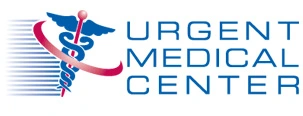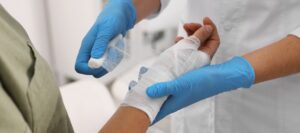
Burns are the most common household injury, especially in regards to children. The majority of burns will heal without causing any chronic issues. Serious burns always require medical attention in order to make sure they do not lead to further complications or even death. Just because a burn is minor doesn’t mean medical attention isn’t important. Early treatment of minor burns greatly impacts how well you heal.
Different Types Of Burns
There are 4 different classifications of burns, including first-degree, second-degree, third-degree and fourth-degree burns.
First-degree burns are considered minor. They produce red skin but no blisters. Some first-degree burns are fine if treated at home. In other cases you should visit Urgent Medical Center after the burn takes place, such as if the burn measures larger than 3-inches or is located on your face or a major joint.
Second-degree burns produce blistering and some thickening of the skin and are considered more serious than first-degree burns. Most second-degree burns heal within 2-3 weeks) but in some cases take longer. The length of recovery is dependent on the severity and size of the burn, as well as how bad blistering is. You should visit your local Urgent Medical Center for second-degree burns especially if they are located on your face, hands, buttocks, groin or feet.
Third-degree burns cause widespread thickening of the skin, as well as a white or black leathery appearance. A third-degree burn is considered major and requires a trip to the Emergency Room.
Fourth-degree burns are even more serious as they extend beyond the skin into tendons and bones.
Both third and fourth-degree burns warrant immediate emergency medical attention. Go to your local Emergency Room or call 911as soon as the injury occurs. There may be less pain with more severe burns because of nerve damage, so pain levels can never identify severity of burn. These burns present the largest risk for complications and infection. The sooner you are properly treated the better.
Burn severity is classified by how deep the injury penetrates beneath the first layer of skin.
A superficial burn only involves the epithelium. This type of burn will appear pink, or red and is painful but not necessarily debilitating. It takes on average 7-10 days to fully heal. An example of this type of burn is sunburn.
A partial thickness burn involves the epidermis and some dermis. These burns appear spotty and pink. They are painful but leave the hairs in tact This type of burn takes 2 to 3 weeks to heal and may scar, especially if healing is delayed. In some cases skin grafts are required.
A full thickness burn involves the skin as well as deeper structures and may appear black or white (eschar), it may also appear leathery in appearance. There will be no response to pain and hairs will be gone.This type of burn requires skin grafting.
Common Causes Of Burns
Burns may be caused many different elements including thermal, chemical_ electrical, or fire. The cause of your burn does not necessarily have anything to do with the severity of the burn. Instead, each cause can produce a number of different degrees of damage. For instance, scalding hot liquids could produce first, second or third-degree burns depending on temperature of the liquid.
If your burn is caused by chemical or electrical you need to see a doctor right away to ensure you are okay. These types of burns can extend deep beneath the skin even if damage on the outer skin appears minor.
How To Treat Burns
Anything beyond first-degree burns requires immediate medical attention and you should not attempt to treat on your own. First-degree burns benefit from medical treatment but can also be treated at home in some cases. If you experience a first degree burn soak it in cold water for 5+ minutes. You may also take ibuprofen or some other over the counter pain relief medication. Applying Aloe-Vera gel or cream is also beneficial, as well as applying antibiotic ointment and loose gauze on the burn to protect it from further injury or infection.
Second-degree burn wound care is similar to what is listed above but requires constant cleaning and bandaging to prevent infection and promote faster healing. You should not attempt to treat second-degree burns at home.
NEVER use ice on a burn or else you risk making the damage much worse. You also never want to apply a cotton ball to a burn, as the small fibers will become stuck to
the burn and present the risk for infection. Home remedies like eggs or butter should be avoided, as they are not proven effective in any way.
Visit Urgent Medical Center for all minor burn care. We are here to help you heal faster.
(Reference)





